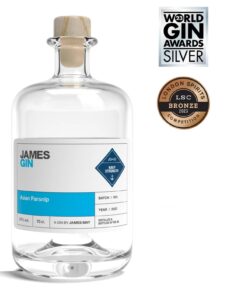Parsnips: Emperor Tiberius accepted part of the tribute payable to Rome by Germania in the form of parsnips. For the purposes of buying my gin, parsnips should not be considered a currency.
Ginger: Although used in traditional medicine and as a dietary supplement, there is no good evidence that consuming ginger or its extracts has any beneficial effect on human health. But just in case it does, it’s in the gin.
Caraway Seed: Finland supplies about 28% of the world’s caraway seed. Also, many of the best racing drivers. This is because the word ‘car’ appears in both job descriptions.
Cubeb Pepper: In the Chinese Tang dynasty, physicians administered cubeb pepper to restore appetite, cure “demon vapours”, darken the hair, and perfume the body. My gin will also do all of these things, possibly. Let us know how you get on and send photographs.
Fenugreek: Desiccated fenugreek seeds have been recovered from the tomb of Tutankhamun. He was also quite desiccated, so these seeds are of more use in gin than in the afterlife.
Cardamom: There are two main types of cardamom – green and black. My gin contains one of them. Guess which.
Grains of Paradise: John Russell characterized grains of paradise in The Boke of Nurture (1460) as “hot and moist”. Use that information as you wish.
Liquorice Root: The English common name is spelled “liquorice” in most of the Commonwealth but “licorice” in the United States. This is because Americans can’t spell.
Sweet Orange: Since you asked, the colour was named after the fruit in about 1512.
Juniper: Gin must contain juniper, or it isn’t gin. In fact, the name ‘gin’ is a shortening of the Dutch word for juniper, ‘jenever’. Not to be confused with ‘Geneva’, which is both a place and a convention but not a drink.
Angelica Root: Angelica Root was also the name of a famous 1920s blues singer from the Mississippi region. Here, it’s botanical.
Coriander Seed: Some people are genetically indisposed towards coriander and believe it tastes of soap. They’re just weirdos, so it’s in the gin.
Water: Navy Strength Asian Parsnip gin is diluted to 57% ABV by adding water. Because we appreciate the work of 19th-century civil engineers, we use tap water, not hand-drawn Highland Spring or Wiltshire chalk stream water, because it wouldn’t be as good.
BCLD SPEC
SKU 302685
ALBERTA
SKU 106152
700ML, 6 bottles/case

